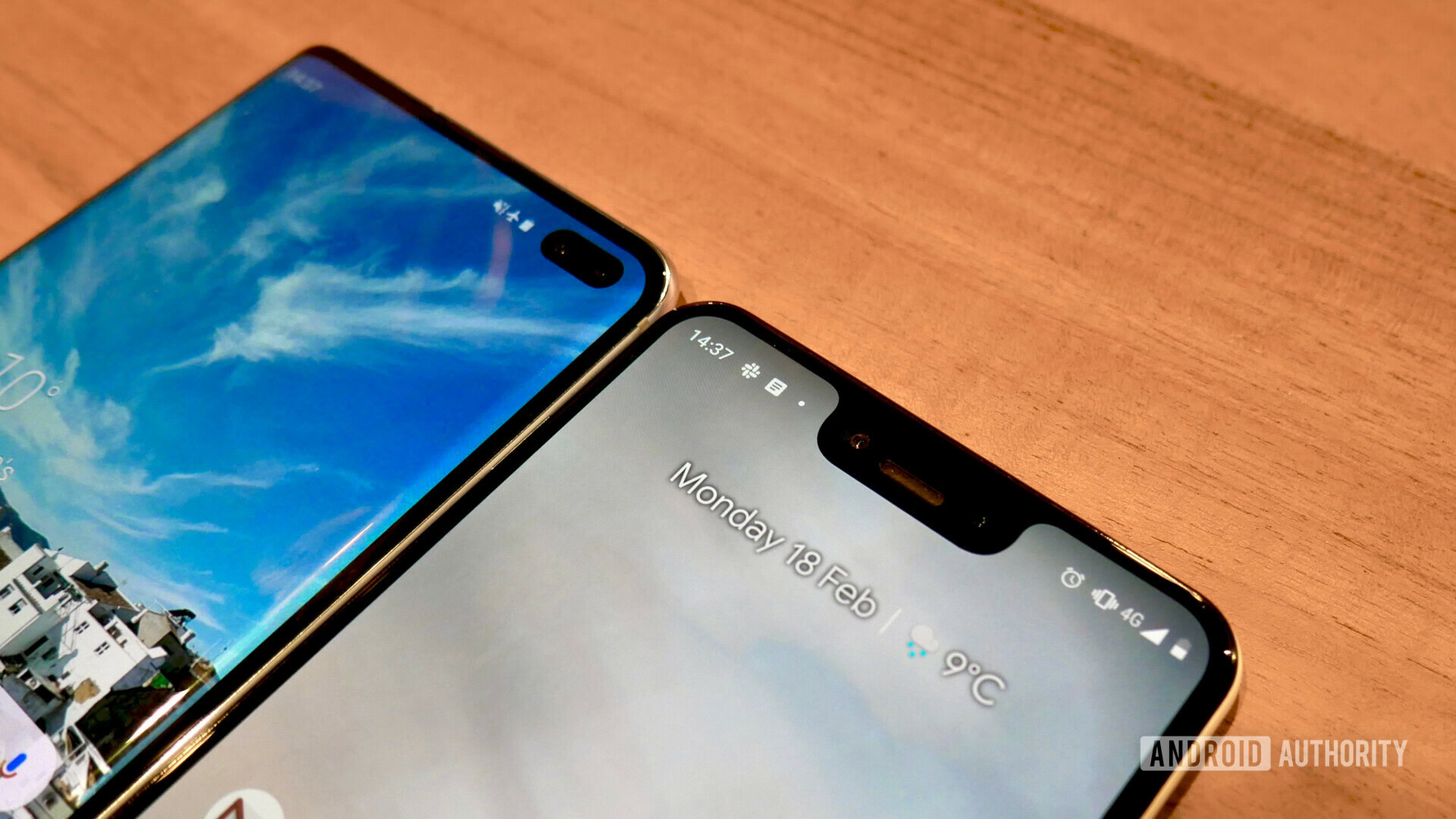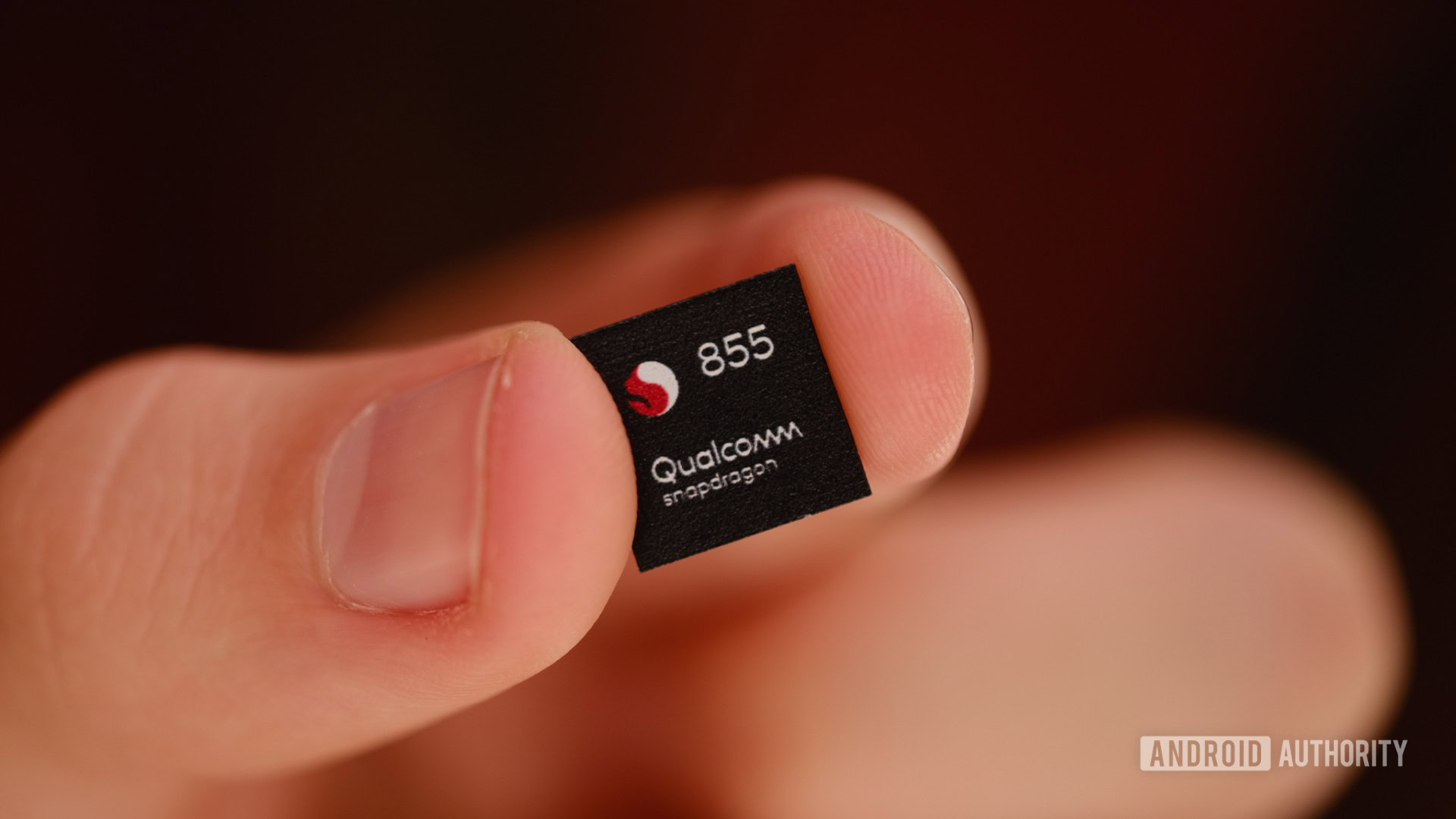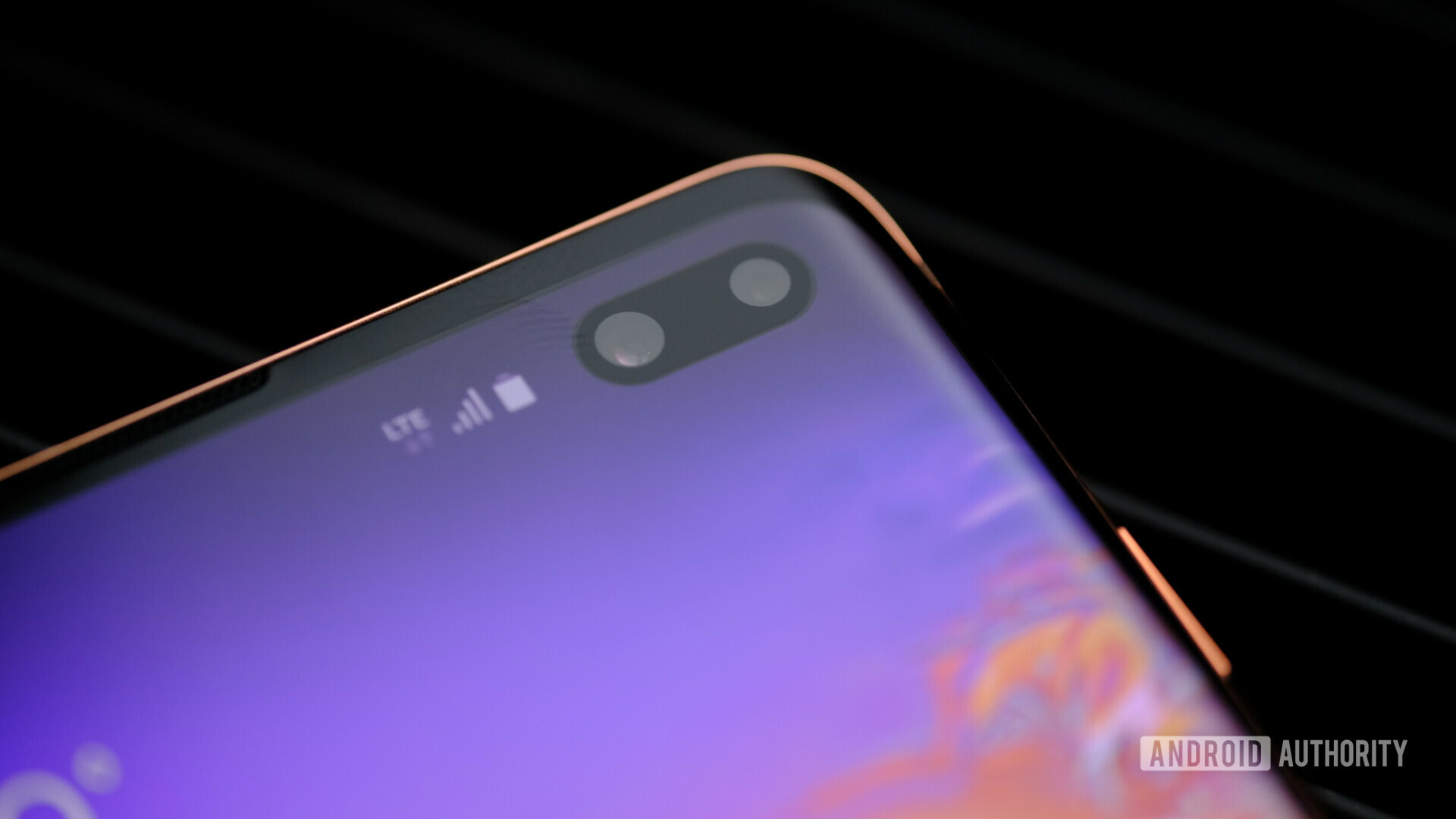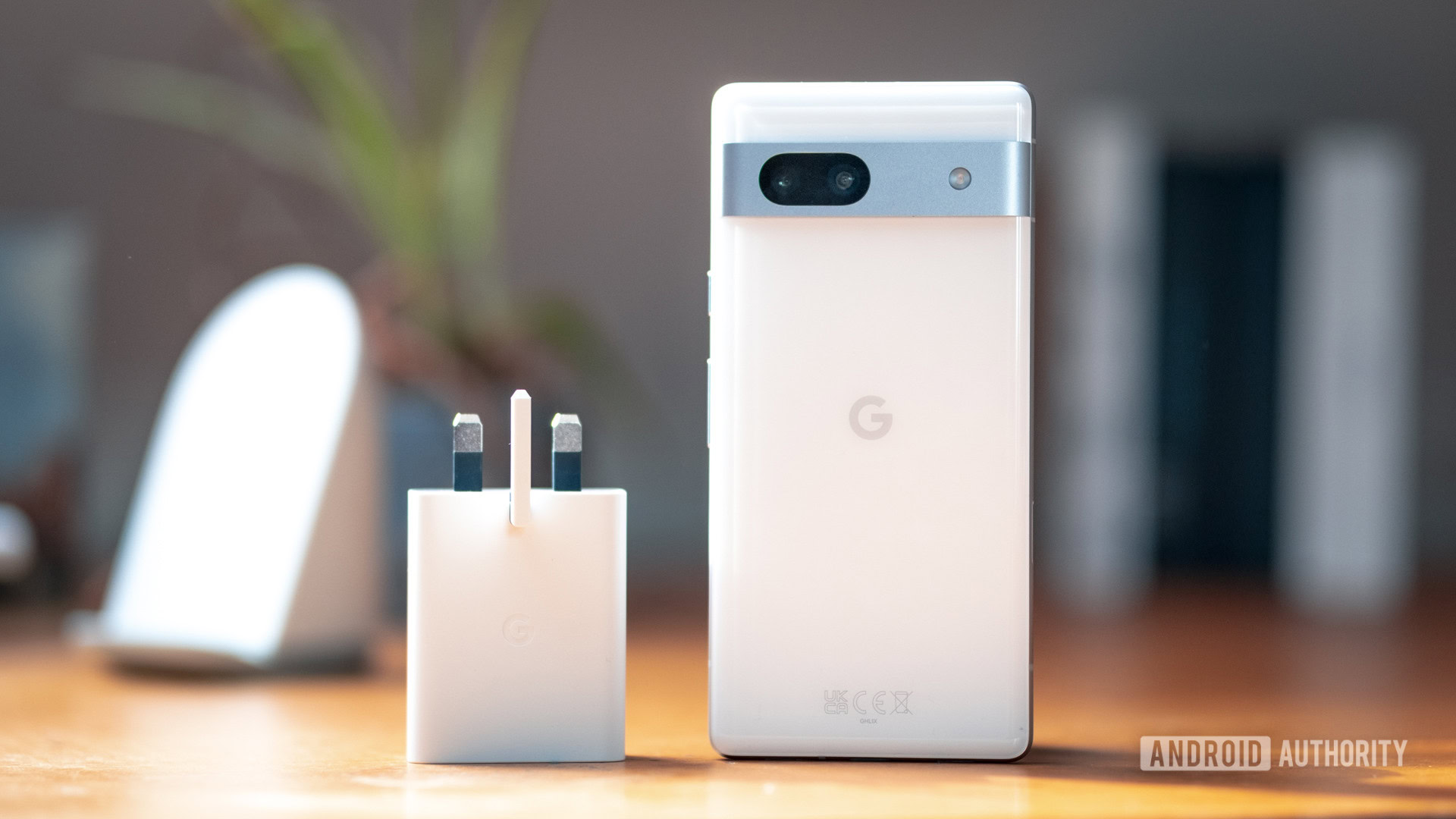Affiliate links on Android Authority may earn us a commission. Learn more.
Samsung Galaxy S10 vs the flagship competition

The Samsung Galaxy S10 has arrived in not two, not three, but four models this year. While the S10e makes the phone more affordable and the 5G model remains a way off, a good chunk of this year’s smartphone purchases will probably go to the flagship Galaxy S10 and Galaxy S10 Plus models.
To help figure out whether these premium models are worth your money, we’re running down the specs against some of the best flagship smartphones on the market right now. For today’s Galaxy S10 versus, we’re pitting it against the HUAWEI Mate 20 Pro, Google Pixel 3 XL, and the LG V40 ThinQ.
Update (9/28): While all these phones are no longer the lastest hotness, now is the perfect time to look at these devices as they continue to see discounts in pricing. This is especially true for the Samsung Galaxy S10 family, which you can now get unlocked for $100 off. See the link below for more info.
Galaxy S10 vs the power user
Starting with the display, Samsung’s AMOLED technology is always the bar to beat and the quality of the Infinity-O display remains exceptional this year too. Other manufacturers offer similar QHD+ resolutions and even curved glass. We don’t have any complaints about them, but Samsung has form for nailing its display implementation every year. Plus the punch-hole is a little less intrusive than the notch.
The closest rival to Samsung’s new flagship in terms of processing power is the HUAWEI Mate 20 Pro. The 7nm Kirin 980 should give the 7nm Snapdragon 855 and 8nm Exynos 9820 a fair run for their money. All feature heftier big CPU cores than last generation chips and graphics performance has been notched up again. Although its Qualcomm’s Adreno 640 which we expect to come out on top here.

Most high-end phones ship with an older Snapdragon 845 and there are few Snapdragon 855 alternatives on the market at the moment. Though, the substantially cheaper Xiaomi Mi 9 is certainly an option worth considering in some markets. Otherwise, you’ll have to wait a bit longer for Samsung’s rivals to release their 2019 flagships.
| Samsung Galaxy S10 | Samsung Galaxy S10 Plus | HUAWEI Mate 20 Pro | Google Pixel 3 XL | LG V40 ThinQ | |
|---|---|---|---|---|---|
Display | Samsung Galaxy S10 6.1-inch AMOLED panel 3,040 x 1440 resolution 19:9 aspect ratio | Samsung Galaxy S10 Plus 6.4-inch AMOLED panel 3,040 x 1,440 resolution 19:9 aspect ratio | HUAWEI Mate 20 Pro 6.38-inch curved OLED 3,120 x 1,440 resolution 19.5:9 aspect ratio | Google Pixel 3 XL 6.3-inch P-OLED 2,960 x 1,440 resolution 18.5:9 aspect ratio | LG V40 ThinQ 6.4-inch P-OLED FullVision 3,120 x 1,440 resolution 19.5:9 aspect ratio |
CPU | Samsung Galaxy S10 8nm octa-core Exynos 9820 / 7nm octa-core Snapdragon 855 | Samsung Galaxy S10 Plus 8nm octa-core Exynos 9820 / 7nm octa-core Snapdragon 855 | HUAWEI Mate 20 Pro 7nm octa-core Kirin 980 | Google Pixel 3 XL 10nm, octa-core Qualcomm Snapdragon 845 | LG V40 ThinQ 10nm, octa-core Qualcomm Snapdragon 845 |
GPU | Samsung Galaxy S10 Mali-G76 MP12 / Adreno 640 | Samsung Galaxy S10 Plus Mali-G76 MP12 / Adreno 640 | HUAWEI Mate 20 Pro Mali-G76 MP10 @ 720MHz | Google Pixel 3 XL Adreno 630 | LG V40 ThinQ Adreno 630 |
RAM | Samsung Galaxy S10 8GB | Samsung Galaxy S10 Plus 8/12GB | HUAWEI Mate 20 Pro 6GB | Google Pixel 3 XL 4GB | LG V40 ThinQ 6GB |
Memory | Samsung Galaxy S10 128/512GB | Samsung Galaxy S10 Plus 128/512GB / 1TB | HUAWEI Mate 20 Pro 128GB | Google Pixel 3 XL 64/128GB | LG V40 ThinQ 64/128GB |
MicroSD | Samsung Galaxy S10 Yes, up to 512GB | Samsung Galaxy S10 Plus Yes, up to 512GB | HUAWEI Mate 20 Pro Yes, up to 256GB (nano memory card) | Google Pixel 3 XL No | LG V40 ThinQ Yes, up to 2TB |
Battery | Samsung Galaxy S10 3,400mAh Non-removable | Samsung Galaxy S10 Plus 4,100mAh Non-removable | HUAWEI Mate 20 Pro 4,200mAh Non-removable | Google Pixel 3 XL 3,430mAh Non-removable | LG V40 ThinQ 3,300mAh Non-removable |
Where Samsung definitely pulls away is with its memory options. 8GB of RAM is already overkill for Android multitasking, and 12GB is simply insane. It’s a bit hard not to complain about the Pixel 3 XL’s 4GB of RAM, as it has suffered from multi-tasking issues in the past. However, those issues should now be fixed.
Where Samsung does add a lot more meaningful value is in its huge storage options. 512GB is plenty for heavy media and app consumers and there’s even a 1TB option should you need it. Samsung and most of its rivals offer a microSD card slot too, something which Google sadly still seems reluctant to include. 128GB is a more standard memory option that serves as a good baseline for heavy users and it’s nice to see Samsung including this as a minimum.
Powering all this tech requires a hefty battery and again Samsung isn’t skimping out this time around. The Galaxy S10’s 3,400mAh cell is OK, but the S10 Plus with its 4,100mAh should last you well into a second day. The gargantuan 4,200mAh battery inside the HUAWEI Mate 20 Pro is also well above the average.
If you want storage, the 1TB Galaxy S10 Plus has more than you could probably ever fill.

Galaxy S10 vs the very best features
Of course, if you just wanted raw specs you could happily buy a OnePlus 6T or Xiaomi POCO F1. However, Samsung and its competitors aim to offer the very best extra features in order to justify those higher price tags.
In-display fingerprint scanners are high-end bits of tech and can be found inside both the Galaxy S10, Galaxy S10 Plus, and HUAWEI Mate 20 Pro. Although Samsung’s technology opts for an even fancier ultrasonic implementation. All of these handsets are certified against water and dust resistance, although only the S10 range and the V40 offer the full IP68 rating. LG goes even further with a MIL-STD-810G durability rating too.

The Galaxy S10 embraces Wi-Fi 6, but this only really matters if you’re running a home network that also supports the technology. The S10 is future-proofed, but Wi-Fi 6 is far from a common piece of tech at the moment. Bluetooth 5.0 and support for high-quality wireless audio codecs appear across the board.
Samsung's chargers aren't the fastest, but support a wide range of wired and wireless standards and accessories.
Wireless charging is also supported across all of these phones, although the standards and charging speeds are a little different. Samsung continues to support both PMA and WPC standards, while the Pixel 3 XL only charges quickly over the air with specific stands and defaults to just 5W with Qi. The Galaxy S10 and HUAWEI Mate 20 Pro are the only two models that support reverse wireless charging. This is a handy feature for charging up headphones, but not much good at powering other phones.
Fast charging is a different matter. The HUAWEI Mate 20 Pro is by far the fastest in this regard, boasting up to 40W of power using its proprietary charger. The Mate 20 Pro, Pixel 3 XL, and Galaxy S10 support USB Power Delivery 3.0, and Samsung also supports Quick Charge 2.0 which is a little slower. The LG V40 supports these standards too but seldom draws more than 15W from the mains.
| Samsung Galaxy S10 | Samsung Galaxy S10 Plus | HUAWEI Mate 20 Pro | Google Pixel 3 XL | LG V40 ThinQ | |
|---|---|---|---|---|---|
Camera | Samsung Galaxy S10 Rear: 16MP f/2.2 ultrawide + 12MP f/1.5 and f/2.4 dual pixel with OIS + 12MP OIS telephoto f/2.4 Front: 10MP f/1.9 dual pixel | Samsung Galaxy S10 Plus Rear: 16MP f/2.2 ultrawide + 12MP f/1.5 and f/2.4 dual pixel with OIS + 12MP OIS telephoto f/2.4 Front: 10MP f/1.9 dual pixel + 8MP depth sensor f/2.2 | HUAWEI Mate 20 Pro Rear: 40MP (wide-angle 27mm) f/1.8 20MP (ultra-wide-angle 16mm) f/2.2 8MP (3x Telephoto 80mm) f/2.4 with OIS Front: 24MP (f/2.0, FF) | Google Pixel 3 XL Rear:12.2MP f/1.8 sensor Front:(2) 8.2MP f/2.2 sensors, (1) wide-angle sensor and depth sensor | LG V40 ThinQ Rear: Main camera: 12MP sensor, ƒ/1.5 aperture, 78° field-of-view, 1.4µm pixel size, OIS, Dual PD Autofocus Super wide: 16MP sensor, ƒ/1.9 aperture, Crystal Clear Lens, 107° field-of-view 2x telephoto zoom: 12MP sensor with 45° field of view Front: Standard: 8MP sensor, ƒ/1.9 aperture, 1.12µm pixel size, 80° field-of-view Wide: 5MP sensor, ƒ/2.2 aperture, 1µm pixel size, 90° field-of-view |
IP Rating | Samsung Galaxy S10 IP68 | Samsung Galaxy S10 Plus IP68 | HUAWEI Mate 20 Pro IP67 | Google Pixel 3 XL IP67 | LG V40 ThinQ IP68 MIL-STD 810G |
Charging | Samsung Galaxy S10 Fast Wireless Charging 2.0 Wireless PowerShare USB Type-C | Samsung Galaxy S10 Plus Fast Wireless Charging 2.0 Wireless PowerShare USB Type-C | HUAWEI Mate 20 Pro 40W HUAWEI SuperCharge 15W Wireless Charging USB Type-C | Google Pixel 3 XL Wireless Charging USB Power Delivery USB Type-C | LG V40 ThinQ Wireless charging Qualcomm Quick Charge 4 (ships with QC 3.0 charger) USB Type-C |
Connectivity | Samsung Galaxy S10 Wi-Fi 6 Bluetooth 5.0 Cat20 LTE, 2.9Gbps, 4x4 MIMO NFC | Samsung Galaxy S10 Plus Wi-Fi 6 Bluetooth 5.0 Cat20 LTE, 2.9Gbps, 4x4 MIMO NFC | HUAWEI Mate 20 Pro Wi-Fi 802.11ac Bluetooth 5.0 NFC | Google Pixel 3 XL Wi-Fi 802.11ac Bluetooth 5.0 NFC | LG V40 ThinQ Wi-Fi 802.11ac Bluetooth v5.0 NFC |
Software | Samsung Galaxy S10 Android 9 Pie Samsung One UI | Samsung Galaxy S10 Plus Android 9 Pie Samsung One UI | HUAWEI Mate 20 Pro Android 9 Pie EMUI 9 | Google Pixel 3 XL Android 9 Pie | LG V40 ThinQ Android 8.1 Oreo LG UX 6.0+ |
Dimensions and weight | Samsung Galaxy S10 149.9 x 70.4 x 7.8mm 157g | Samsung Galaxy S10 Plus 157.6 x 74.1 x 7.8mm 175g | HUAWEI Mate 20 Pro 157.8 x 72.3 x 8.6mm 189g | Google Pixel 3 XL 76.7 x 158.0 x 7.9mm 184g | LG V40 ThinQ 158.7 x 75.6 x 7.6mm 168.9g |
These premium flagships also have the best mobile cameras around. The HUAWEI Mate 20 Pro and Google Pixel 3 XL are the bars to beat for quality, while the LG V40 ThinQ offers a ton of flexibility.
The Samsung Galaxy S10 boasts a trio of sensors: a 12MP dual-pixel main camera, 16MP ultra-wide lens, and 12MP 2x telephoto zoom. A similar combination can be found in the Mate 20 Pro and V40, although HUAWEI’s zoom extends to 3x. Unfortunately, the phone doesn’t feature a high-resolution main camera with pixel binning like the Mate 20 Pro and a number of other new phones do. However, Samsung’s switchable aperture should help take decent enough low light shots.
The S10 Plus model includes a depth sensor to the front camera for some fancy portrait shots. Meanwhile, the LG V40 ThinQ has a wide-angle front camera to fit more of your friends in the shot. Samsung is usually a safe bet for camera quality, but we’ll have to undergo a shootout to pick a definite winner.
The Galaxy S10 Plus sets another high bar
Samsung, for now, remains the market leader with good reason. The company’s smartphones exhibit style and quality while including the very best cutting edge technologies around. This year’s Samsung Galaxy S10 range is no different, although the company’s prices continue to creep up into increasingly uncomfortable territory for some.
However, Samsung has major competition in the premium market these days. The HUAWEI Mate 20 Pro perhaps offers the closest alternative in terms of design and technological prowess. At least until 2019’s wave of flagship smartphones land in the coming weeks and months. Let us know whether you think Samsung’s Galaxy S10 is the best piece of kit on the market right now, and but sure to check out the rest of our launch coverage:
- Samsung Galaxy S10 announced: Here’s everything you need to know about the new flagship series from Samsung.
- Samsung Galaxy S10 specs and features: Full Galaxy S10 specs walkthrough.
- Samsung Galaxy S10 hands-on: Samsung’s latest flagships set a new bar
- Samsung Galaxy S10 price, availability, and release date: Where to buy the new Galaxy S10